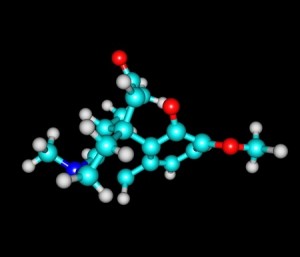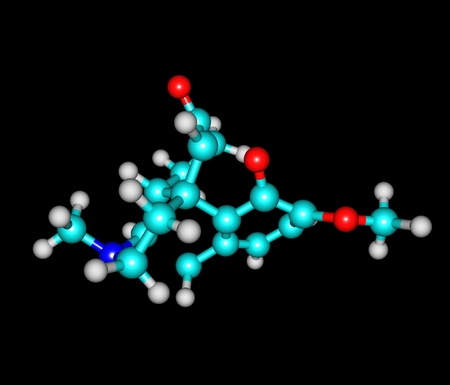
The documentary, “American Addict” (available on Netflix) reported that 106,000 Americans die from prescription drugs each year. In the first six months of 2008, 67% of the oxycodone that was prescribed throughout the U.S. came out of Broward County Florida. What was going on? Mid Eastern states had a prescription drug-monitoring program; Florida didn’t. Drug seekers from those states went south for their drugs.
By the end of the 1800s, a wide variety of “patent medicines” had come onto the market. They were called “patent” medicines because their formula was a secret; so the ingredients weren’t listed. “Some of the patent medicines were up to 50% morphine by volume. And no matter what ails you, if you take something that is 50% morphine by volume, you’re going to feel better.” And some people began to use opiated “cure-alls” as intoxicants. These cure-alls were popular among women. “The typical opiate user in the nineteenth century was a middle class, middle–aged, white woman living in the middle of the country,” according to Pat Morgan of UCLA.
When Congress passed the Pure Food and Drug Act of 1906, it required the patent medicine industry to label its ingredients. “As a result of these regulations, most of the patent medicines went out of business immediately.” Addiction decreased dramatically; as a result of Americans becoming aware of what these drugs could do, according to historian Cliff Schaffer. But heroin addiction was just coming into its own (See another article, “Legacy of the ‘Joy Plant’”).
By 1913, heroin replaced morphine as the leading cause of hospital admissions for narcotics problems in the US. It was the leading drug of abuse in New York City. In 1914 the federal government passed the Harrison Tax Act. This legislation required an opiate prescriber to get a license and pay a tax; and an opiate user had to be a patient of a licensed prescriber. It created an estimated 100,000 to 200,000 criminals out of users and addicts. Heroin eventually became an illicit substance in 1924 with the Heroin Act, which made it illegal to manufacture, possess or distribute heroin—even for medical use. But the chemists of the world were already working to develop synthetic substitutes.
Oxycodone was first synthesized in 1916 at the University of Frankfurt. It was hoped that it could be a less addictive substitute for morphine and heroin. By the 1920s, there were reports of “euphoric highs” in patients using oxycodone. It was first introduced to the US in 1939. In the early 1960s, the US classified it as a Schedule II drug. In 1950, Percodan (oxycodone and aspirin), was put on the market by Endo Pharmaceuticals. In 1971, Percocet (oxycodone and acetaminophen) was launched by Endo Pharmaceuticals. In 1996, OxyContin, a time-release form of oxycodone became available from Purdue Pharmaceuticals.
The time-release mechanism that was supposed to make OxyContin more difficult to abuse was quickly and easily neutralized by crushing the tablet before snorting the powder or mixing it with water to inject it. Users compare the high from oxycodone to heroin. In 2010, an abuse-deterrent formulation of OxyContin was introduced. The intent was to make it more difficult to crush. The New England Journal of Medicine published an article, “Effect of Abuse-Deterrent Formulation of OxyContin” in July of 2012 that indicated the new formula did indeed decrease it as a drug of abuse. But 24% of those who had abused OxyContin reported they found a way to defeat the tamper-resistant properties. Sixty-six percent reported switching to another opioid, with heroin being the most common choice. Heroin is easier to use, cheaper and easily available. The article concluded “Abuse-deterrent formulations may not be the “magic bullets” that many hoped they would be.”
Not to be deterred by these conclusions, Purdue Pharmaceuticals recently received approval for Terginiq ER, a combination of oxycodone and naloxone, a drug that is supposed to block the euphoric effects of oxycodone if it is crushed (so it can’t be snorted or dissolved and injected). But if you simply swallow Teriniq ER, the naloxone is not activated. “When the pills are swallowed they are as addictive as pure oxycodone.” Nevertheless, the FDA sees the approval of abuse-deterrent medications like Targiniq ER as a positive step in its fight address the public health crisis of prescription drug abuse in the U.S.
Hydrocodone was first synthesized in 1920, of course, by Germans. In 1924, it was first sold by Knoll Pharmaceuticals in Germany as Dicodid. Knoll was also responsible for the introduction and marketing of oxycodone as Dinarkon in 1917, and Dilaudid (hydromorphone), in 1926. Through a series of mergers, Knoll became a part of Abbott Laboratories in June of 2002.
In 1929, the U.S. Bureau of Social Hygiene gave the National Research Council several million dollars to study various new compounds like hydrocodone, to see if there was a less addictive opioid than morphine or heroin. Nathan Eddy tested the safety, efficacy and side effects of 350 drugs, including morphine, codeine, Dilaudid and hydrocodone. His results showed that hydrocodone was an effective painkiller, with predicable side effects. It also “induced euphoria, and therefore there was a danger of addiction.” Eddy said that tolerance developed more slowly than with morphine or Dilaudid and the occurrence of abstinence syndromes were less severe than with other drugs. This suggested an individual could become dependent on it without knowing it until they are really hooked.
With the Controlled Substances Act of 1971, pure hydrocodone was classified as a Schedule II controlled substance, as was opium and morphine. But in combination with other drugs, it could be regulated as a Schedule III drug. In 1978, Knoll Pharmaceuticals introduced Vicodin, five milligrams of hydrocodone with 500 milligrams of acetaminophen. Generic Vicodin became available in 1983.
Hydrocodone had become the most prescribed medication in the U.S. “Since 2007, more U.S. prescriptions were written for hydrocodone + acteminophen than any other drug.” In 2012 alone, there were over 135 million prescriptions written.
In 2002, emergency room reports involving hydrocodone had increased by 500% since 1990. That same year, the FDA recommended tighter warnings on drugs containing acetaminophen because of the concerns it can cause liver damage. In October of 2014, Vicodin was reclassified as a Schedule II drug. The purpose of the change was to minimize its use as a recreational drug, while ensuring that patients with severe pain still have reasonable access.
A new hydrocodone painkiller called Zohydro, with 5 to 10 times the power of Vicodin, was approved by the FDA in October of 2013. This approval ignored the 11 to 2 vote AGAINST APPROVAL by its own advisory panel. Zohydro is pure hydrocodone. Melanie Haiken, a contributor to Forbes, wondered if we need a new opiate painkiller, given that we don’t seem to be able to prevent the ones we already have from ending up in the wrong hands. She commented: “The U.S., with just 5 percent of the world’s population, now accounts for 84 percent of global oxycodone (OxyContin) consumption and more than 99 percent of hydrocodone (Vicodin, Lortab) consumption. That’s a lot of painkillers.”





